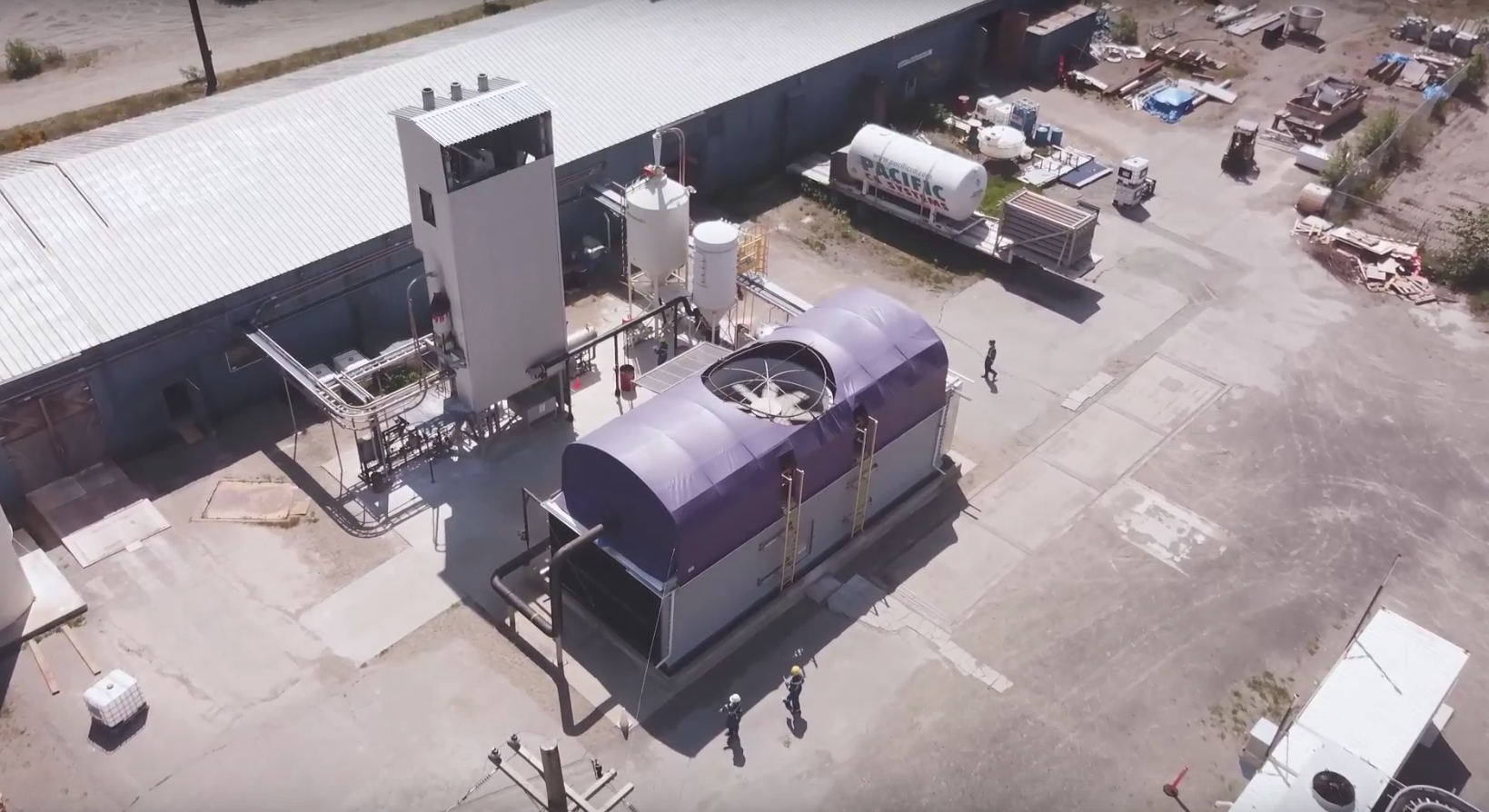
Over the past decade, numerous studies have shown that global warming is roughly proportional to the concentration of CO2 in our atmosphere. In this way one can estimate our remaining carbon budget. This is the total amount of man-made carbon dioxide that can still be released into the atmosphere before reaching a set global temperature limit. The nations of the world agreed on this limit in the 2015 Paris Agreement. It should not exceed 1.5°C, and in any case be well below 2.0°C. However, diverging estimates have been made for the remaining carbon budget, which has a negative impact on policy-making. Now, an international research group of renown climate experts has published a framework for the calculation of the global CO2 budget in Nature. The researchers suggest that the application of this framework should help to overcome the differences when estimating the carbon budget, which will help to reduce uncertainties in research and policy.
Since the fifth report of the Intergovernmental Panel on Climate Change (IPCC), the concept of a carbon budget has become more important as an instrument for guiding climate policy. Over the past decade, a series of studies has clarified why the increase in the global average temperature is roughly proportional to the total amount of CO2 emissions caused by human activity since the Industrial Revolution. In the framework, the research group cites numerous published documents that provide evidence for the linearity of this correlation. This literature has allowed scientists to define the linear relationship between warming and CO2 emissions as a transient climate response to cumulative CO2 emissions (TCRE). The linearity is an appealing concept because of the complexity of the Earth’s response to our CO2 emissions. Additional processes that affect future warming have been included in recent models, among them, for example, the thawing of the Arctic permafrost. These additional processes increase the uncertainty of current climate models. In addition, global warming is not just caused by CO2 emissions. Other greenhouse gases, such as methane, fluorinated gases or nitrous oxide, as well as aerosols and their precursors affect global temperatures. This further complicates the relationship between future CO2.
In the case of global warming caused by CO2, every tonne contributes to warming, whether that ton is emitted in future, now or in the last century. This means that global CO2 emissions must be reduced to zero, and then remain zero. This also means that the more we emit in the next years, the faster we have to reduce our emissions later. At zero emissions, warming would stabilize, but not disappear. It may also reverse. An overdraft of the carbon budget would have to be compensated by removing the CO2 later. One way of removing CO2 from the atmosphere would be a technology called direct air capture, which we reported earlier. Ultimately, this will probably be the only way left, as carbon neutral renewable energy source sources only make up 5% of our energy mix. Establishing a global carbon budget will further highlights the urgency of our clean energy transition. Unfortunately, there is a large divergence when it comes the amount of the CO2 remaining in our carbon budget. In their framework, the researchers cite numerous studies on carbon budgets to maintain our 1.5°C target. Starting 2018, these range from 0 tonnes of CO2 to 1,000 gigatons. For the 2.0°C target, our carbon budget ranges from around 700 gigatons to nearly 2,000 gigatons of remaining CO2 emissions. The aim of the researchers is to limit this uncertainty by establishing a budget framework. The central element is the equation for calculating the remaining carbon budget:
Blim = (Tlim − Thist − TnonCO2 − Thist) / TCRE − EEsfb
The budget of the remaining CO2 emissions (Blim) for the specific temperature limit (Tlim) is a function of five terms that represent aspects of the geophysical and human-environment systems: the historical man-made warming (Thist), the non-CO2 contribution to the future temperature increase (TnonCO2), the zero emission commitment (TZEC), the TCRE, and an adaptation for sources from possible unrepresented Earth system feedback (EEsfb).
| Term | Key choices or uncertainties | Type | Level of understanding | |
|---|---|---|---|---|
| Temperature limit | Tlim | Choice of temperature metrics that allow global warming, the choice of pre-industrial reference and consistency with global climate targets | Choice | Medium to high |
| Historical man-made warming | Thist | Incomplete data and methods for estimating the man-made component; see also Tlim | Choice and uncertainty | Medium to high |
| Non-CO2 contribution to future global warming | TnonCO2 | The level of non-CO2 contributions coinciding with global net zero CO2 emissions; depends on policy choices, but also on the uncertainty of their implementation | Choice and uncertainty | Medium |
| Non-CO2 contribution to future global warming | TnonCO2 | Climate reaction to non-CO2 forcers, such as aerosols and methane | Uncertainty | Low to medium |
| Zero-emissions commitment | TZEC | The extent of the decadal zero emission commitment and near-zero annual carbon emissions | Uncertainty | Low |
| Transient climate response to cumulative emissions of CO2 | TCRE | TCRE uncertainty, linearity and cumulative CO2 emissions that affect temperature metrics of the TCRE estimate | Uncertainty | Low to medium |
| Transient climate response to cumulative emissions of CO2 | TCRE | Uncertainty of the TCRE linearity, value and distribution beyond peak heating which is affected by cumulative CO2 emissions reduction |
Uncertainty | Low |
| Unrepresented Earth system feedback mechanisms | EEsfb | Impact of permafrost thawing and duration as well as methane release from wetlands on geomodels and feedback | Uncertainty | Very low |
In the CO2 budget, the unrepresented Earth system feedback (EEsfb) is arguably the greatest uncertainty. These feedback processes are typically associated with the thawing of permafrost and the associated long-term release of CO2 and CH4. However, other sources of feedback have been identified as well. This include, for example, the variations of CO2 uptake by the vegetation and the associated nitrogen availability. Further feedback processes involve changes in surface albedo, cloud cover, or fire conditions.
It remains a challenge to adequately characterize the uncertainties surrounding the estimates of our carbon budget. In some cases, the reason of these uncertainties is inaccurate knowledge of the underlying processes or inaccurate measurements. In other cases the terminology is used inconsistently. For better comparability and flexibility, the researchers propose to routinely measure global surface air temperature values. This method gives robust data for models and model runs over selected time periods. More detailed comparisons between published estimates of the carbon budget are currently difficult because the original data used for publication often are missing. The researchers therefore propose to provide these in the future along with publications.
Breaking down the carbon budget into its individual factors makes it possible to identify a number of promising pathways for future research. One area of research that might advance this field is to look more closely at the TCRE. Future research is expected to narrow down the range of TCRE uncertainties. Another promising area of research is the study of the correlation between individual factors and their associated uncertainties, for example, between uncertainties in Thist and TnonCO2. This could be achieved by developing methods that allow a more reliable estimate of historical human-induced warming. It is also clear that less complex climate models are useful to further reduce the uncertainties of climate models, and hence the carbon budget. Currently, each factor of the framework presented by yhr researchers has its own uncertainties, and there is no method to formally combine them.
At Frontis Energy, too, we think that progress in these areas would improve our understanding of the estimates of our carbon budget. A systematic understanding of the carbon budget and is crucial for effectively addressing global warming challenges.







